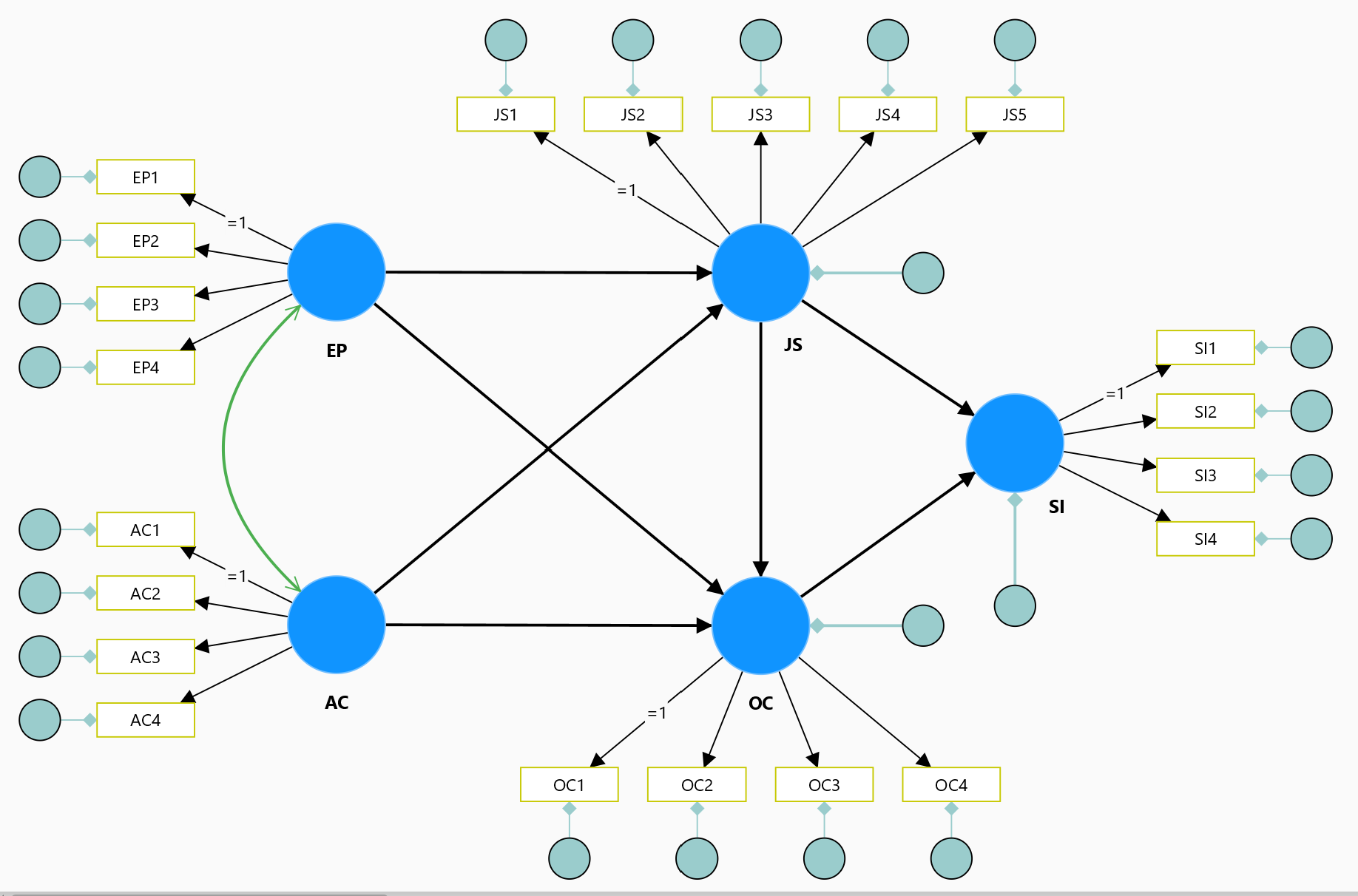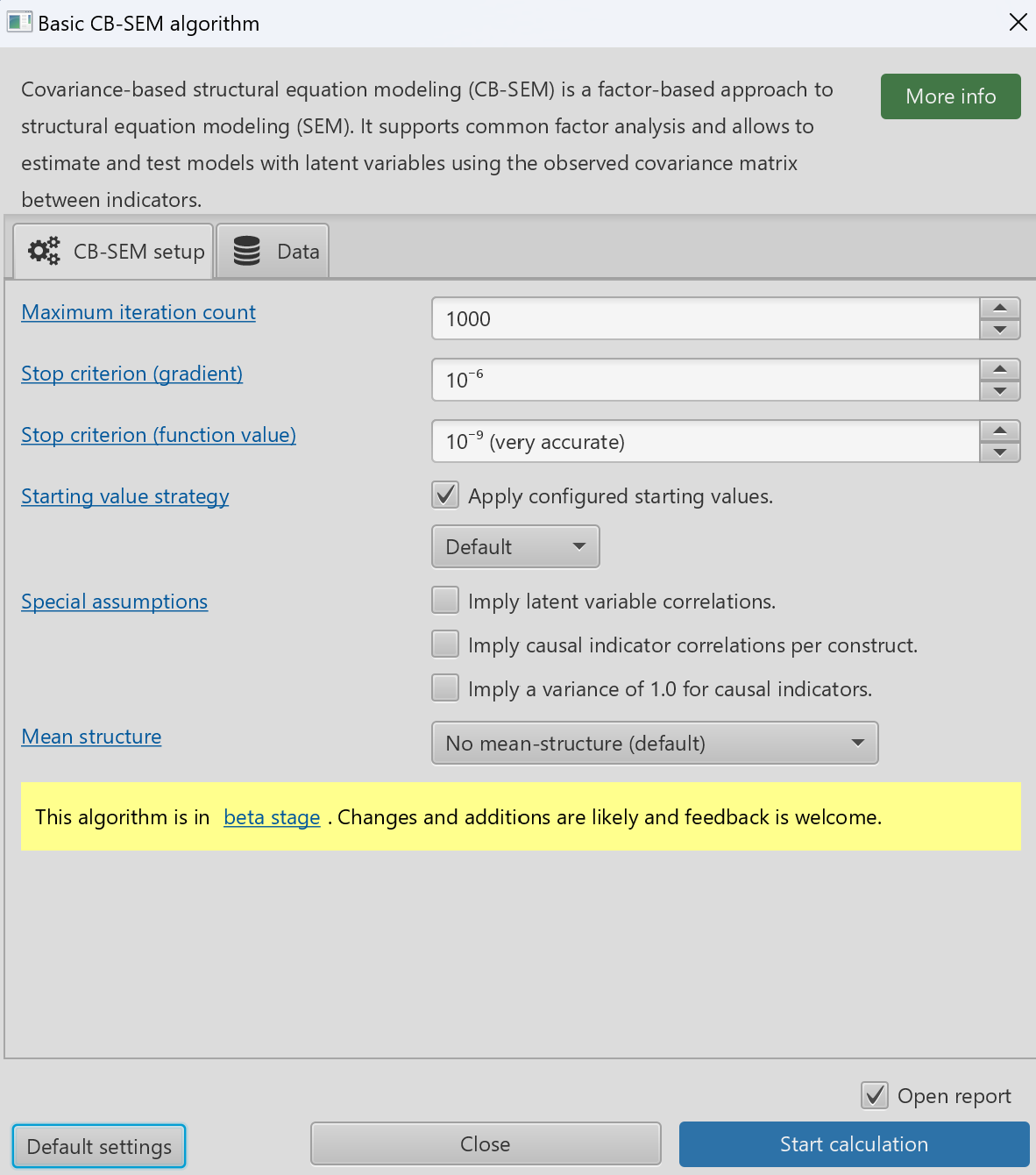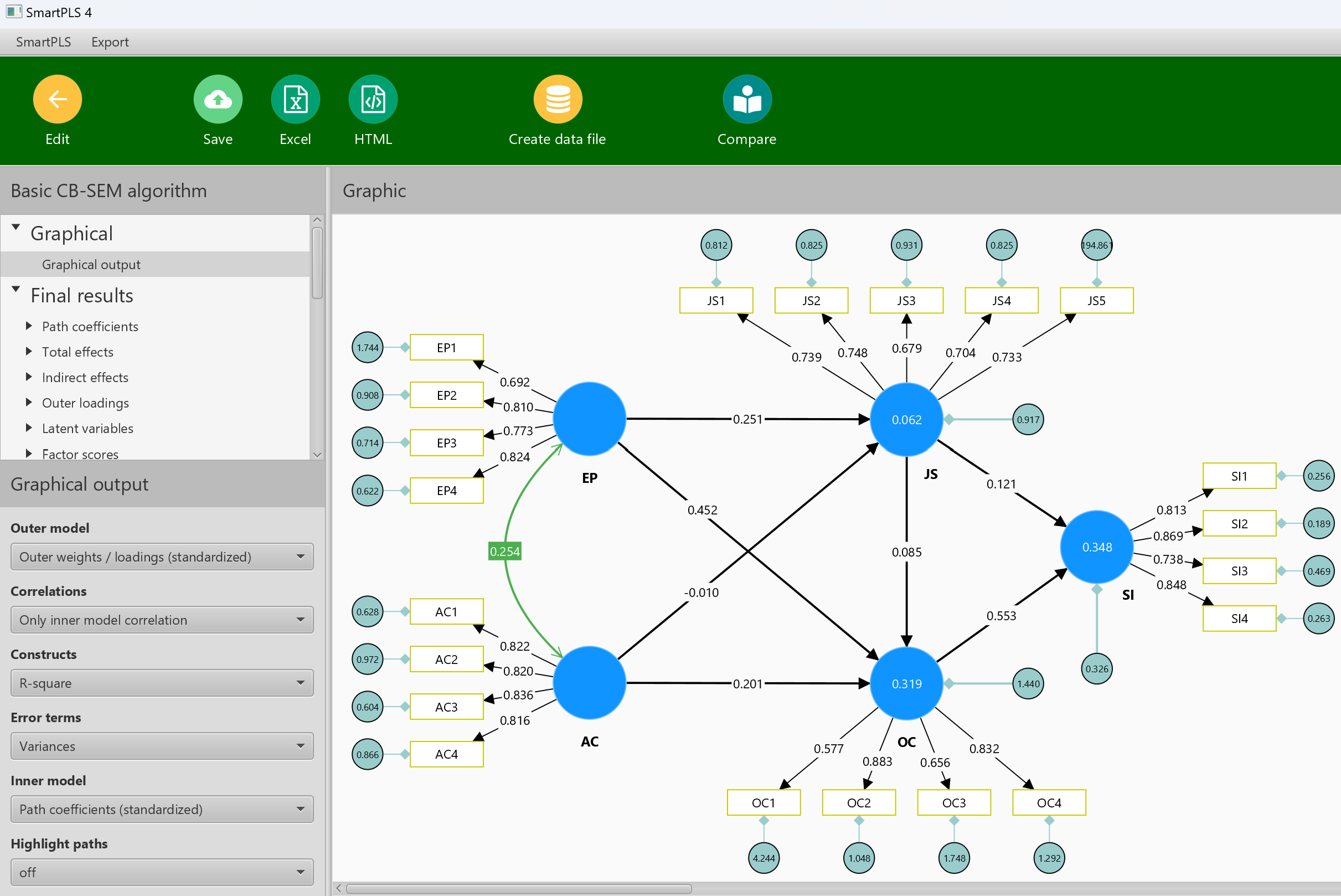Your First CB-SEM Model
Throughout this tutorial, we'll use SmartPLS to perform CB-SEM analysis and visualize results. For this example, we'll use the model and dataset from Hair et al. (2018). Let's begin!
Before starting, please create a project and import the HBAT_SEM.sav data file.
Draw the Model
To create constructs in the model:
- Select indicators of a specific construct from the Indicators list.
- Drag and drop these indicators to the Modeling canvas.
- Name the new construct and press ENTER.
To create relationships between constructs:
- Select the Connect tool in the Main toolbar.
- Click on the starting construct and move to the target construct.

Here are some options to align your indicators and constructs on the Modeling canvas:
- Drag elements around.
- Select elements and use alignment actions in the toolbar.
- Right-click on a construct to open a menu with additional actions, such as Align the indicators.
- Press ALT + SHIFT to align indicators.
- Double-click a construct to open a dialog with more settings.
Estimate the Model and Open the Results Report
After creating your model:
- Click the Calculate button in the Main toolbar.
- Choose the Basic CB-SEM algorithm.
- Click Start calculation with default settings and ensure the Open report checkbox is checked.

Analyze the Results
Use the Report navigation to explore CB-SEM results provided by SmartPLS 4, supporting a comprehensive evaluation of the model.

You can save the report to your project or export it to Excel or HTML for sharing.
Significance Testing of CB-SEM Results
For significance testing:
- Return to the Model view.
- Click Calculate and choose CB-SEM bootstrapping.
- Adjust settings if needed and click Start calculation.
What’s Next?
Congratulations on creating your first CB-SEM model! To learn more, explore textbooks by Hair et al. (2018) and Kline (2023) and sample CB-SEM projects in SmartPLS.
Consider joining our courses on PLS-SEM or exploring the PLS-SEM Academy for video-based training.
References
Hair, J.F., Black, W.C., Babin, B.J., and Anderson, R.E. (2018). Multivariate Data Analysis, 8th Ed., Cengage: London.
Kline, R.B. (2023). Principles and Practice of Structural Equation Modeling (5 ed.). Guilford Press.

